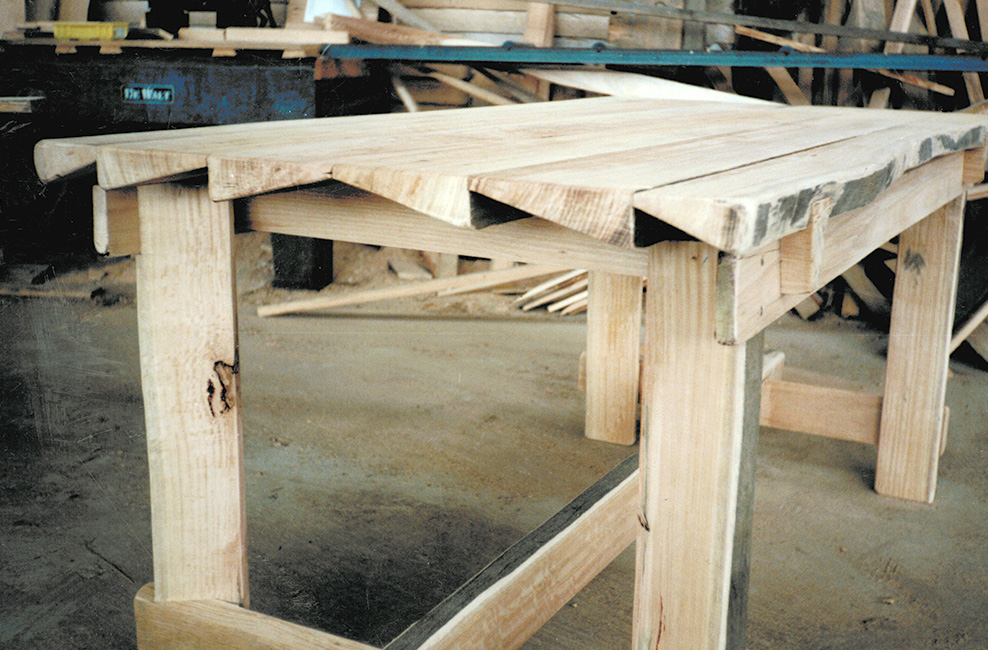A radical new method of converting logs into sawn timber could revolutionise the timber industry. The new radial sawing method, developed by inventor Andrew Knorr, is claimed to recover up to an amazing eighty percent of small diameter plantation eucalypt logs.
Traditional hardwood sawing methods using circular saws and band re-saws recover between thirty and fifty percent of fifty year old regrowth eucalypts. With young plantation trees, this figure can be significantly less. Square slabs are cut from the log, resulting in some waste from the centre of the log (the pith) and the outer sapwood. The new technique of radial sawing claims a greater recovery from young, small diameter plantation eucalypts. Small hardwoods are renowned for their natural growth stresses. These can be seen in the end splitting of the logs. Radial sawing releases these stresses evenly into each wedge. The wedges are extremely stable and shrink evenly. Its supporters believe it will move the industry away from the reliance on native forests.
To cut a log radially; the log is mounted between two centres, much like a lathe. The saw is then moved along the length of the log, cutting to within twenty five millimetres of the centre. The log is repeatedly turned in the centres and re-sawn to produce wedges. These wedges are later re-sawn to produce perfect quarter-sawn boards. Sections of up to two hundred and fifty millimetres wide are possible, from logs of up to seven hundred millimetres in diameter. Our picture shows one of the very earliest uses of the technology, demonstrating the stability of the wood.
A new $6 million sawmill at Yarram in Victoria’s east is the culmination of three decades of invention and careful development. It takes the radical idea of radial sawing from a concept to a commercial reality. “I’ve always said that once our demand exceeds our supply; that really proves the technology can work and the product can be accepted in the marketplace” says Mr Chris McEvoy, former CSIRO wood scientist and now a joint owner of the company called Radial Timber. “Architects have taken our product and taken it to a whole new level,” Mr McEvoy said. “They’ve actually given us even more confidence in our product in what it can do and use it in some amazing designs.”
The company was in a trial venture with Heartwood Plantations to evaluate the best species to supply the mill in years to come. The trial plantations on sites near the mill were looking so promising that they are on track to yield useful sawlogs by the time they reach 25 years of age. That is about half the time it takes to grow a sawlog in a native forest. For the small town of Yarram, the new mill means 15 direct jobs in a region where employment can be hard to find.

